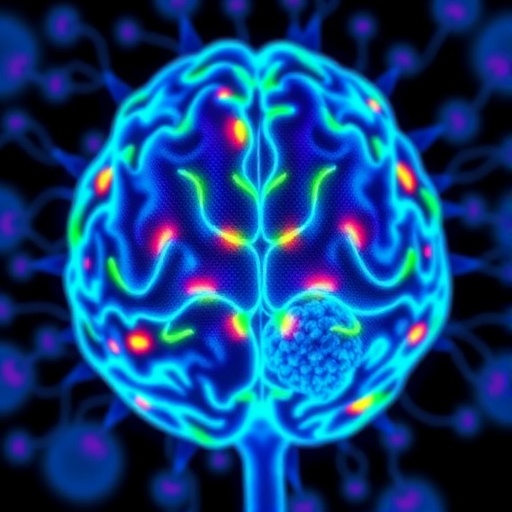In an era marked by rapid advancements in cancer research, a new player has emerged in the battle against glioblastoma, one of the most formidable and aggressive brain tumors known to modern medicine. A recent study led by prominent researchers Lee, Hsu, and Chang explores the potential of interleukin-19 (IL-19) as a groundbreaking theranostic target, which could transform the treatment landscape for glioblastoma patients. This research ignites hope not only for effective therapies but also for the development of diagnostic tools that could pave the way for personalized treatment approaches.
Glioblastoma is notorious for its highly aggressive nature and an ability to evade the immune system. Patients diagnosed with this form of brain cancer often face poor prognoses, with estimated survival rates being alarmingly low. The research team highlights a critical challenge: the immunosuppressive microenvironment created by glioblastoma cells, which shields tumors from immune attacks and undermines therapeutic strategies. Understanding the molecular players involved in this defense mechanism is essential for developing any effective treatment.
IL-19, a cytokine that participates in inflammatory responses, is emerging as a key factor in the glioblastoma landscape. The study reveals that IL-19 levels are significantly elevated within the glioblastoma microenvironment, a finding that raises pivotal questions about its role in tumor progression. Increased expression of IL-19 is suggested to contribute to the immunosuppressive conditions that allow tumors to flourish. These insights are essential for identifying new therapeutic strategies that can disrupt this cycle.
The researchers employed a multifaceted approach, combining laboratory experiments with advanced imaging techniques to assess IL-19’s impact on glioblastoma tumors. Their findings indicate that targeting IL-19 could potentially reverse the immunosuppressive properties of the tumor microenvironment. This could facilitate a more effective immune response against the tumor, thereby improving patient outcomes.
What makes IL-19 particularly attractive as a theranostic target is its dual potential to serve both as a biomarker and a therapeutic target. If validated in clinical settings, measuring IL-19 levels could provide oncologists with critical insights into a patient’s tumor behavior and treatment response. Such a biomarker would be invaluable in framing individualized treatment regimens, enabling a more precise approach to glioblastoma therapy.
Furthermore, the study dispels earlier notions of IL-19 being purely an inflammatory mediator. Instead, it suggests that IL-19 orchestrates a complex interplay between various immune cell types, influencing their behavior and interactions within the tumor microenvironment. This understanding of IL-19 as a key player reinforces its potential as a promising target for both diagnosis and treatment.
The insights from this research not only prompt a reevaluation of IL-19’s function in glioblastoma but also illuminate new avenues for drug development. Researchers are urged to leverage these findings to design novel agents that can either inhibit IL-19 or block its signaling pathways. The goal would be to reinvigorate the immune system’s ability to combat glioblastoma cells and circumvent the formidable barriers posed by the tumor microenvironment.
Adopting a therapeutic strategy targeting IL-19 may also hold implications for combination therapies. By integrating IL-19 inhibitors with existing immunotherapies, the potential for synergistic effects could be significant, offering a more effective assault on glioblastoma. While the pathway from bench to bedside is fraught with challenges, the promise of this research could herald a new chapter for glioblastoma treatment.
Moreover, the findings enhance our understanding of the tumor-immune system relationship. By investigating how glioblastoma modulates the immune environment, researchers can begin to unravel the intricacies involved in tumorigenesis. This research could influence subsequent studies aimed at other cancers where similar immunosuppressive mechanisms are at play.
The study emphasizes the necessity for a robust pipeline translating these findings into clinical practice. The researchers advocate for collaborations with clinical oncologists to undertake trials exploring IL-19 targeting in human subjects. Such endeavors could lead to critical breakthroughs that would not only benefit glioblastoma patients but also expand the applicability of IL-19 research across different cancer types.
As the scientific community begins to grapple with the implications of these findings, the quest for effective glioblastoma therapies remains urgent. By focusing on the immune landscape and harnessing the power of IL-19, researchers are positioning themselves to tackle the complexities of this aggressive cancer head-on. The exploration into IL-19 serves not only as a beacon of hope for glioblastoma patients but also as a potential model for reimagining cancer treatment paradigms.
In conclusion, the burgeoning interest surrounding IL-19 marks a pivotal shift in the approach towards glioblastoma treatment. Through continued research and clinical trials, the possibility of reprogramming the immunosuppressive microenvironment could redefine cure strategies. As the scientific journey evolves, the integration of IL-19 as a theranostic target could ultimately lead to personalized, effective treatment regimens that bring newfound hope to those affected by glioblastoma.
By marrying diagnostic and therapeutic strategies, researchers may finally carve a path through the complex and often cruel realities of glioblastoma. The marriage of cutting-edge science and patient-centered care could well be on the horizon, illuminating a potential pathway toward better outcomes and improved quality of life for glioblastoma patients globally.
With every finding, researchers close the gap on understanding glioblastoma’s stubborn resistance to treatment. This transformative study serves as a clarion call: innovations targeting IL-19 could soon disrupt the status quo of glioblastoma care, challenging preconceived notions and prompting a forward momentum that could save lives.
Subject of Research: IL-19 as a therapeutic and diagnostic target in glioblastoma.
Article Title: IL-19 as a promising theranostic target to reprogram the glioblastoma immunosuppressive microenvironment.
Article References: Lee, G.A., Hsu, J.BK., Chang, YW. et al. IL-19 as a promising theranostic target to reprogram the glioblastoma immunosuppressive microenvironment. J Biomed Sci 32, 34 (2025). https://doi.org/10.1186/s12929-025-01126-w
Image Credits: AI Generated
DOI: 10.1186/s12929-025-01126-w
Keywords: Glioblastoma, IL-19, immunotherapy, cancer research, theranostic targets, tumor microenvironment.




